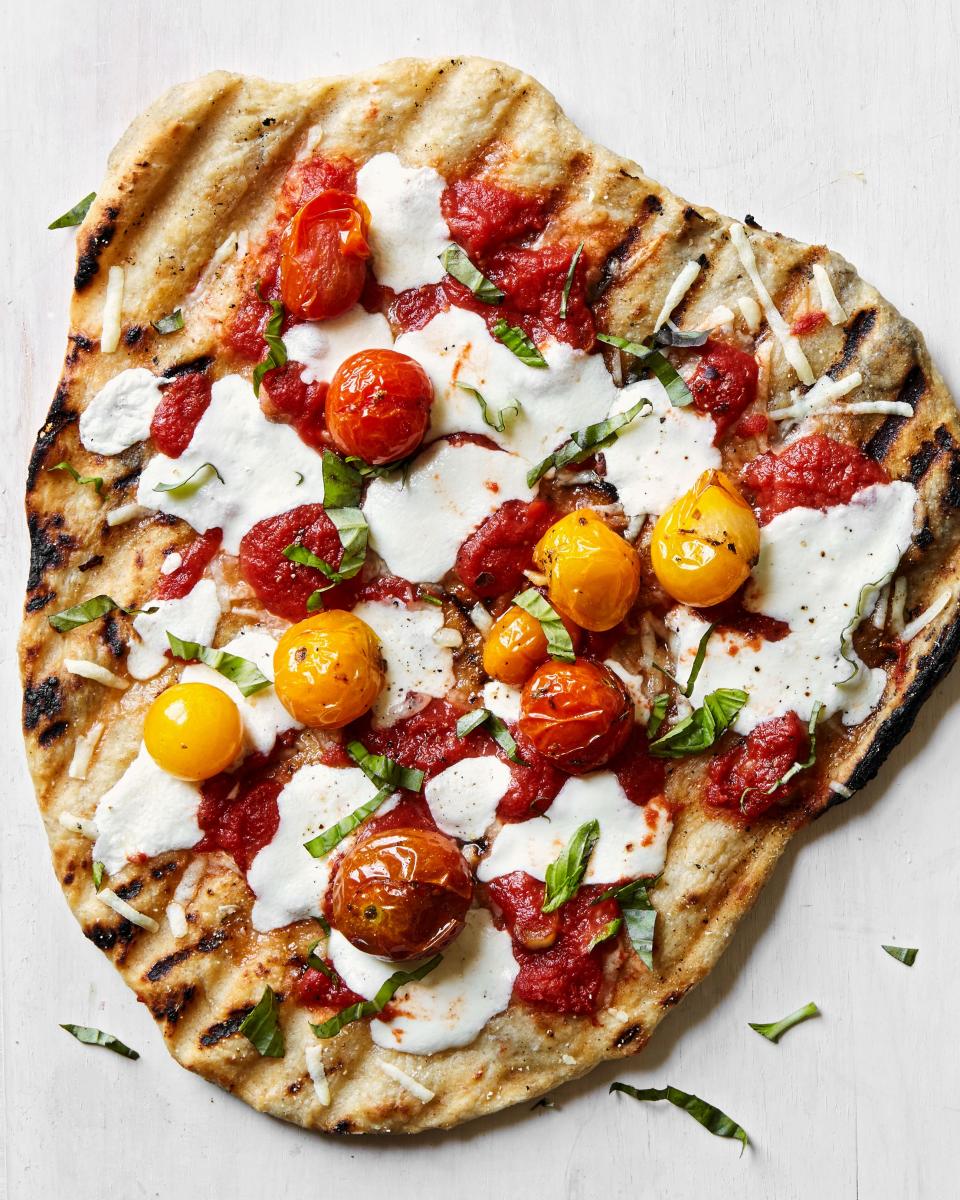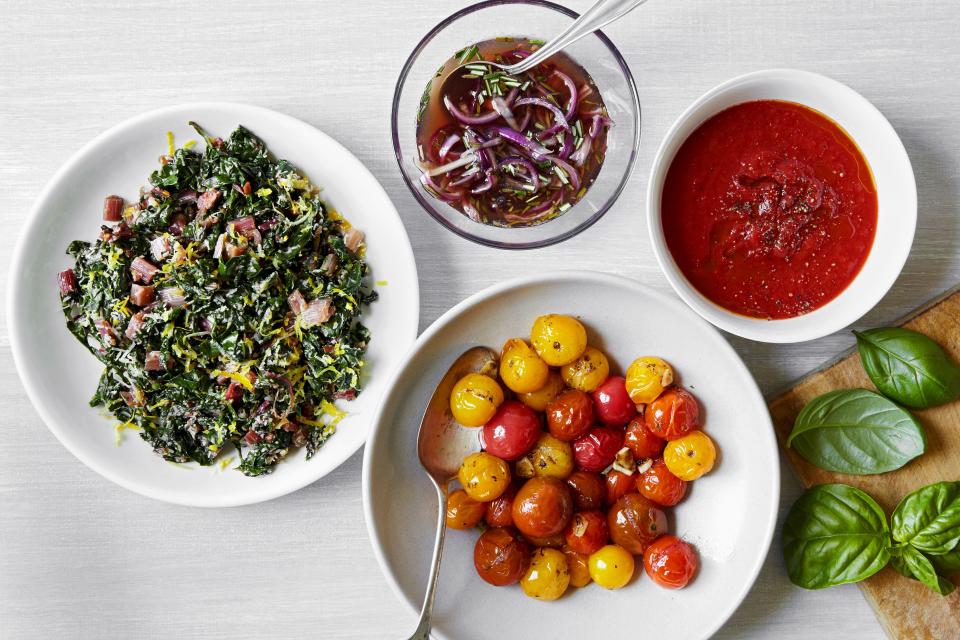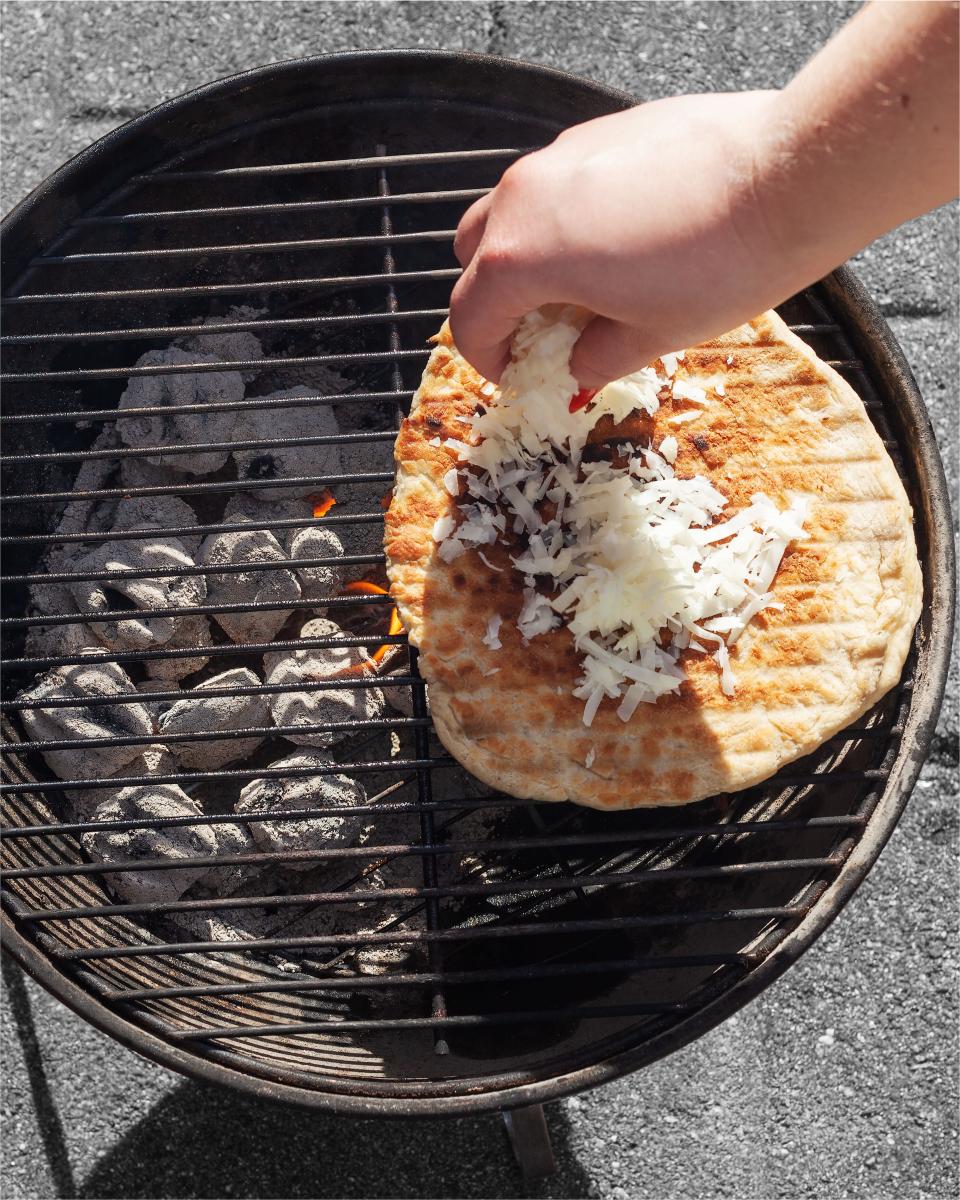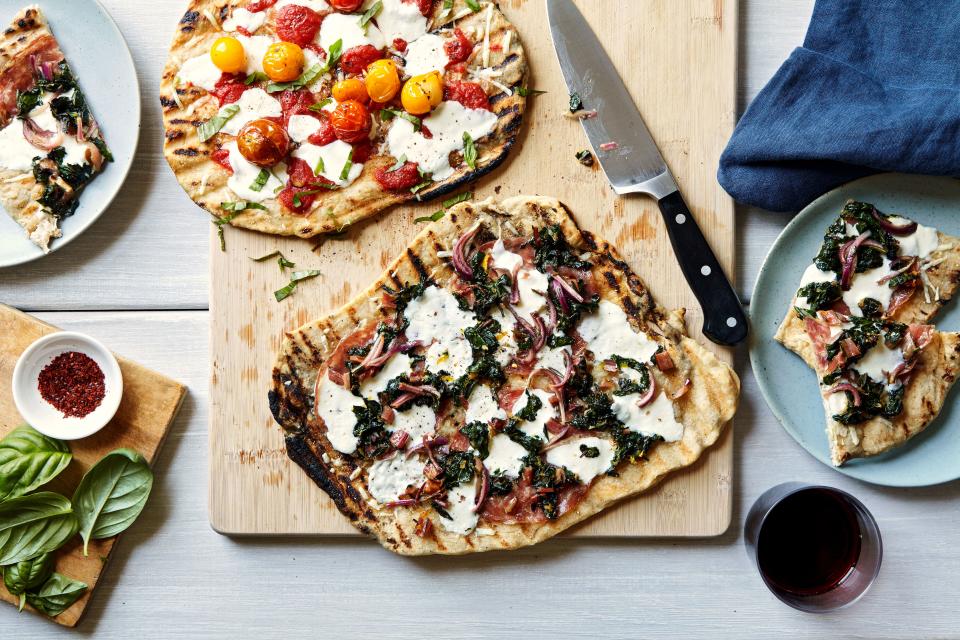Everything You Need to Know to Make Great Pizza on the Grill
Memorial Day weekend is about transitions. Spring to summer. Subdued tones to crisp whites. Shoes to sandals. But it also marks one very special transition in particular: the shift from regular ol’ pizza season—a long and wonderful season, to be sure—to grilled pizza season, baby! (It would probably be called GPS if that acronym wasn’t, sadly, already taken.) Time to pack up those trusty pizza stones away along with the heavy sweaters, fire up the grill, and revel in the glory of smoky, charred-around-the-edges circles of pure, unadulterated warm-weather bliss.
But what makes this year’s season extra special is that, well, we’ve got a brand spanking new recipe for this most superlative of summer delights, courtesy of none other than grilled pizza enthusiast Carla Lalli Music, author of Where Cooking Begins. “I look forward to it every year. The exciting thing about grilled pizza is the actual grilling part—no oven cranked to 500, no pizza stone preheating. It’s cooking outdoors, which is my absolute favorite way to cook,” she says.
And the best thing about it is that it’s not merely an excellent indoor pizza recipe recalibrated and rejiggered to be cooked on the grill—this grilled pizza recipe is tailor-made for Great Outdoors Greatness. From a homemade dough formula (not as hard as you think!) that loves live fire to sauces and toppings that don’t need direct heat to shine, every aspect of Music’s recipe takes into account the specific joys and challenges of making pizza on the grill, and sets you up for success. Here’s what makes it so special.
The dough

Burst Tomato Grilled Pizza - IG
Ordinarily, Music is a fan of store-bought pizza dough—it can be a real weeknight lifesaver. But when it comes to making pies on the grill, she feels that making your own dough pays off. “You just don’t know what you’re getting with store-bought,” Music explains. Her grilled pizza dough “is sturdier and less floppy than the standard,” which means it will firm up as soon as it meets the heat of the grill rather than sagging through the grates. (Nobody wants a zig-zag ‘zza!) And a sturdier dough is also easier to handle in warmer weather, retaining its integrity where a wetter one might become too soft or ungainly.
Then there’s the flour. Could you make this dough with 100% good old-fashioned all-purpose flour? Sure! But Music prefers higher-protein bread flour for her pizza dough. “The extra gluten produces a dough with more stretch and chew, and a crust that has more crunch,” she says. “All-purpose flour works, but it makes for a pizza that is more fluffy-tender than chewy, almost like a pita or a flatbread.” A judicious amount of whole wheat flour gets invited to the party, too, lending “just a little nutty something” without weighing the dough down, though it can easily be subbed for white flour if you don’t have any kicking around.
The toppings

Grilled Pizza Toppings - INSET
Music’s approach to toppings is also grill-specific. “The pizza doesn’t stay on the heat for that long, so the only thing you’re actually cooking is the dough—everything on top is going to get heated through at best, but nothing’s going to get all that bubbly or concentrate in flavor.”
With that in mind, in addition to a dead-simple tomato sauce, she’s developed an array of big-flavor condiments that combine a number of elements that might ordinarily be added to a pizza individually. A burst tomato sauce that has the signature dried oregano kick of a pizzeria slice. A citrusy swiss chard pesto that delivers the complexity and brightness of a finishing shower of parm and lemon zest. And an onion and Rosemary Agrodolce drizzle that gets the sweet-tart notes offered by honey and aged vinegar in the mix. “You’re doing the work on the front end, which is much more efficient than adding a bunch of finishing touches on the back end, when you want to be focused on eating pizza and hanging out,” she says. Making more than one of them for one round of pizzas will leave you with plenty of leftovers, which is far from a bad thing: They’re also super versatile, and can be used to top everything from grilled meat and fish to grain bowls.
The cheese she calls for in this grilled pizza recipe is also no afterthought. “You don’t want something with the high water content of fancy Bufala mozzarella, and packaged bricks of part-skim mozzarella (like Polly-O) are best when the high heat of an oven can get it to that bubbly, almost liquid stage,” she explains. “Grocery store fresh, whole-milk mozz is soft enough to tear and melts quickly. It just kind of relaxes and gets shiny and soft—you’re still getting a cheese pull without it having to fully liquify.”
Music likes to complement that with a bit of manchego, which offers the saltiness and nuttiness of good parm but is soft enough to melt on a grilled pizza. When it comes to other toppings, Music recommends low-lift store-bought items that don’t need to be precooked—think thinly-sliced cured meats—since they won’t have much time to cook on the grill.
The method

Grilled Pizza - IG V4
The actual grilling part of the grilled pizza equation isn’t difficult, but Music’s method is foolproof. The key is to build a two-zone fire, which effectively splits your grill in half, creating a high-heat zone and a low-heat zone. (For a charcoal grill, this means banking all of your coals to one side; for a gas grill, this means cranking the heat on half the burners and turning the remainder to low.)
To make the most of this setup, Music likes to lay a disk of dough on the hot side first to fully cook one side of the crust, flip it to firm up the second side just enough so that it’s easy to move, and then sliding the whole thing over to the cooler side of the grill to top it, basically hitting “pause” on the pizza timer. “It gives you enough time to have the call-and-response topping negotiations that are such a big part of the grilled pizza vibe without the bottom crust burning,” she explains. “It’s about control! You’re cooking and socializing at the same time, so this helps to avoid unnecessary stress and chaos.”
Once the pie is topped, it’s ready to slide back over to the hot side for a few minutes—just enough time for the cheese to melt and the undercarriage to take on the right amount of char. And if you find yourself in a situation where the bottom is finished but the toppings need more time, you can always slide it back over the cool side, cover the grill, and let that gentle ambient heat finish the job. No muss, no fuss, just backyard pizza bliss.
Grilled Pizza
Originally Appeared on Epicurious


